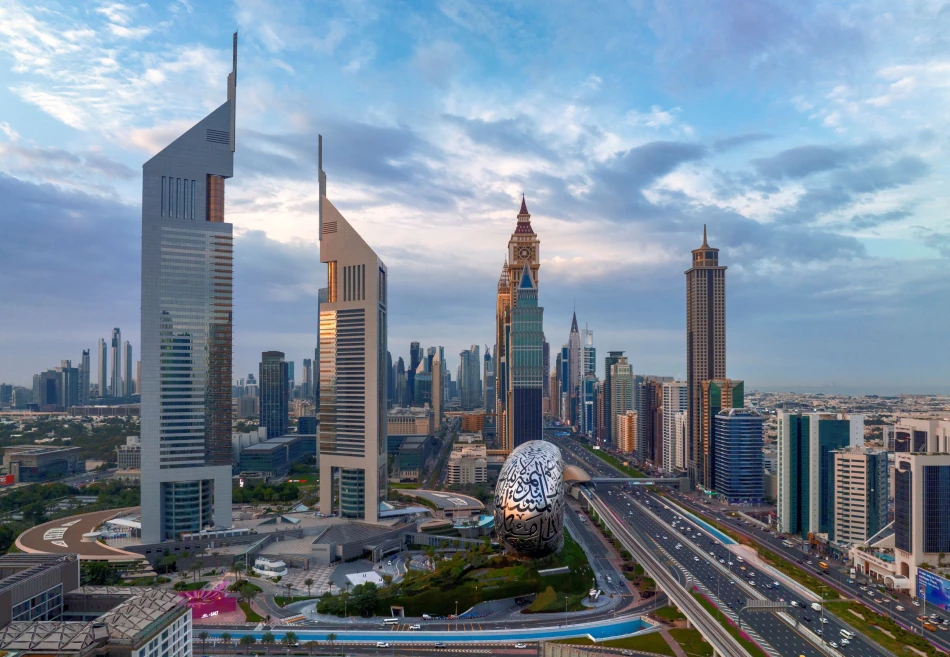
Expect Partly Cloudy Skies: Tomorrow's Weather Forecast Revealed
UAE Braces for Scorching 49°C Heat as Summer Weather Pattern Intensifies
The United Arab Emirates is set to experience another day of extreme heat with temperatures reaching up to 49°C (120°F) in some regions, as the National Center of Meteorology forecasts partly cloudy skies with potential afternoon thunderstorms in eastern areas. The weather pattern reflects the UAE's peak summer conditions, with significant implications for energy consumption, outdoor activities, and regional climate adaptation strategies.
Regional Temperature Variations Paint Stark Climate Picture
The forecast reveals dramatic temperature disparities across the Emirates, with inland areas bearing the brunt of the heat wave. Al Sila is expected to reach the highest temperature at 49°C, while coastal Fujairah will experience relatively cooler conditions with highs of 34°C. This 15-degree difference highlights the UAE's diverse microclimates, where proximity to water bodies provides crucial cooling effects.
Major urban centers will face significant heat stress, with Abu Dhabi and Al Ain both reaching 45°C, while Dubai and Sharjah hover around 44°C and 43°C respectively. These temperatures, combined with humidity levels reaching up to 85% in coastal areas like Dalma Island, create challenging conditions for residents and infrastructure.
Weather Dynamics and Seasonal Patterns
Wind and Precipitation Outlook
Meteorologists predict light to moderate winds ranging from 10-25 km/h, occasionally intensifying to 40 km/h during daytime hours. These southeasterly to northeasterly winds will likely stir dust, reducing visibility and air quality in some areas. The forecast includes potential cumulus cloud formation in eastern regions during afternoon hours, possibly bringing scattered rainfall—a welcome relief in the arid climate.
Maritime Conditions Remain Stable
Both the Arabian Gulf and Sea of Oman are expected to maintain light wave conditions, favorable for maritime activities and offshore operations. Tide schedules show the first high tide in the Arabian Gulf at 21:52, while the Sea of Oman will experience its primary high tide at 08:12, followed by a secondary peak at 13:24.
Economic and Infrastructure Implications
Such extreme temperatures place enormous strain on the UAE's electrical grid as air conditioning demands surge. The country's energy infrastructure, heavily invested in recent years, faces its annual stress test during these peak summer months. For the construction and tourism sectors, these conditions necessitate adjusted working hours and enhanced safety protocols.
The temperature variations also underscore the UAE's strategic urban planning, where cities like Dubai and Abu Dhabi have invested billions in climate-resilient infrastructure, including district cooling systems and heat-resistant building materials.
Regional Climate Context
The UAE's current weather pattern aligns with broader Middle Eastern summer trends, where temperatures regularly exceed 45°C. However, the Emirates' unique position between desert and sea creates distinctive challenges compared to purely continental climates in neighboring Saudi Arabia or inland Iran.
These conditions reinforce the UAE's commitment to climate adaptation strategies, including the National Climate Change Plan 2017-2050 and massive investments in renewable energy through projects like the Mohammed bin Rashid Al Maktoum Solar Park. As global temperatures continue rising, the UAE's experience managing extreme heat offers valuable insights for other nations facing similar challenges.
Most Viewed News

 Sara Khaled
Sara Khaled






